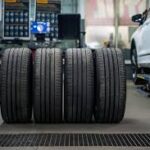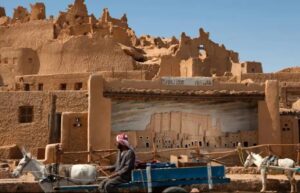The UAE is a country of high-caliber roads, vast deserts, and high-powered cars. But despite the relatively high tech infrastructure, road surfaces can differ vastly throughout the country, affecting maintenance of a vehicle particularly in terms of tyre longevity. For motorists, knowing how these environmental and physical elements affect the performance of tyres can make the difference between being safe, in the money and alive, and perhaps even saving the lives of their vehicle’s most important connection to the road.
Tyres in the UAE face different challenges compared to other markets due to high temperatures, diverse terrains and urban driving. Even high-end premium brands, such as the dunlop tires drivers often use, can wear faster if they are not maintained correctly or are not suited to the driving we do in Dubai. Whether cruising down the well-manicured highways of Dubai or off-roading through rugged Ras Al Khaimah, the condition of the roads you’re driving on plays an important part in the life cycle of your tyres.
1. Temperature Extremes and Tyre Degradation
It is no secret that high temperature is one of the biggest contributors to tyre wear in the UAE. “Road surface temperatures can be in excess of 70 degrees in the summer, which is hot enough to make the rubber in tyres soft.” This enhanced softness simply means enhanced tread wear and reduced strength. Running extended periods with such heat but without air pressure adjustment, such can cause blowouts, less traction, and shorter tyre life.
Drivers need to check tyre pressure more often in peak summer months, when hot temperatures cause the air inside the tyres to expand. Either over-inflating or under-inflating are detrimental to wear and handling, and will greatly decrease tyre life.
2. Urban Roads vs. Off-Road Conditions
The UAE has a mixture of civilised motorways and punishing desert pistes – both with completely different needs from its carried rubber. In city environments, where there is loads of urban traffic and braking, the tyres wear differently than with off road use or on uneven country roads. Although high velocity roads are likely to impart more heat and stress to tyres, the off-road or unpaved roads will do more to cause mechanical abrasion, puncture, and uneven tread wear.
But if you call places like Dubai or Abu Dhabi home and ply along highways most of the time, you’ll start to see swift, though consistent wear and tear. Desert cruising, or mountain tracks can chip, slice or crack tyres so they should also be checked regularly.
3. Road Surface Quality and Tyre Friction
The UAE undoubtedly has one of the best road infrastructure in the world, however, not all roads are made equal. Strong asphalt can also cause the tread of the tyre to wear out evenly and help with fuel economy, however older coarser asphalt can cause tyres to wear out early. Broken or debris-littered pavement and rough pavement is hard on your tires and they can wear out faster.
In urban environments, speed bumps, kerb edges, and sudden changes in elevation (like those encountered when exiting from parking garages and navigating steep driveways) also pile additional stress on our tyres, particularly if you happen to be driving low-profile performance models.
4. Driving Habits and Tyre Stress
Conditions on the road are not independent of how drivers drive on them. Hard braking, fast cornering, taking off and driving hard from stop, high speed cornering especially on warm or rough roads – the list of tricks you use on your car can have big effect on your tire life. The extra torque being produced by high-performance cars, even those of the electric variety, places even more stress and strain on tyres, and if they’re not built to cope with these sorts of performance demands, that’s yet more pressure being put on them.
Besides, frequently passing roadwork zones, sand patches or gravel surfaces, it raises the possibility of imbedded objects or uneven wearing. The phenomenon can be countered by rotating (swapping the position of) the tyres every 10,000-12,000 kilometres for even wear.
5. Sand and Dust: Hidden Enemies
While hydroplane dust can be finner and very light, in the desert, or during a sandstorm, tires become coated with ultra-fine dust that can work its way into tread patterns and soften the rubber compound. The sand acts as a natural abrasive that grinds away at the tyre treads much quicker – particularly at high speed on hot roads. It also has a big impact on grip and braking, so tyre health is even more important.
If they are cleaned of sand and regular pressures maintained after coming off the desert then their life will be preserved. If off-roading or desert driving is usual, all-terrain or heat-resistant tyres are recommended.
6. Water Drainage and Hydroplaning Risks
Although occasional, the sudden rain can lead to a slippery road, and poor drainage. Little grains of sand and left over oil create a slick road that when mixed with water raises the potential of hydroplaning. When the tread depth is inadequate, or if one tyre is wearing unevenly, the tyres are significantly less effective in those circumstances with less control and braking ability.
And make sure your tires are at least carrying the legal minimum of 1.6mm of tread depth – though earlier changing will be safer, particularly if you’re traveling at speed on a slippery road.
7. Tyre Selection Based on Environment
Selecting the best tyres for your normal driving conditions is important. High performance tires, although they are great for grip and speed, can wear down quickly in extreme heat or after enduring rugged conditions. These all season or heat resistant tyres tend to last more and are more suitable for the Middle East weather conditions.
Michelin, Bridgestone and Pirelli, among others, have models designed for the region, developed to cope with the heat thanks to advanced rubber compounds that slash road noise while retaining better grip.
8. Maintenance Tips for Extended Tyre Life
Tyre care is crucial Even with the best tyres on perfect roads, lack of maintenance can seriously shorten the life of your tyres. Here are a few tips:
- Check tyre pressure monthly.
- Rotate tyres regularly.
- Check for punctures, cuts, or irregular wear.
- Do not overburden your vehicle.
- Balance and align your wheels in accordance with the recommendations of your manufacturer.
Active tyre maintenance will comfortably add thousands of kilometers to any set of tyres.
Conclusion
In conclusion, the UAE road and driving conditions are as diverse as the scenery – everything from smooth roadways to challenging conditions in the desert. The variety, extreme heat and aggressive driving styles definitely affect how long tyres last. Picking the right tyres and maintaining them properly is about performance, but it is also about safety and cost.
Perhaps that is why well-known brands such as London, Dubai, and Abu Dhabi Michelin tyres have built technology to tackle the conditions found in the UAE. Even the best of tyres however, require making good choices and looking after your tyres regularly.
Regardless if you commute daily, take weekend drives, or have purchased your first luxury car, understanding how your surroundings have an effect on your tyres will lead to better performance, less long term cost, and a safer driving experience as you operate a vehicle in the UAE.
- How Road Conditions Affect Tyre Lifespan in the UAE
- Think your tyres are built to last? UAE road conditions may be cutting their life short—see what’s really affecting your tyre lifespan and how to fix it!
- Tyre Lifespan in the UAE, Tyre Lifespan, PitStop Arabia
Related posts:
 Finding the Right MOT Centre Near Me: Why NH Service Center Ltd Is Milton Keynes’ Trusted Choice
Finding the Right MOT Centre Near Me: Why NH Service Center Ltd Is Milton Keynes’ Trusted Choice
 Why More UK Drivers Are Switching to Japanese Used Cars with Nobuko Japan
Why More UK Drivers Are Switching to Japanese Used Cars with Nobuko Japan
 Electric Skateboards: Revolutionizing Urban Travel and Commuting
Electric Skateboards: Revolutionizing Urban Travel and Commuting
 Importance of Employee Training and Certification in Service Quality Assurance
Importance of Employee Training and Certification in Service Quality Assurance
 From Basic Service to Complex Repairs: One Trusted Garage for Your German Car in Abu Dhabi
From Basic Service to Complex Repairs: One Trusted Garage for Your German Car in Abu Dhabi
 Why the VW Beetle Engine Model Kit is a Must-Have for Automotive Hobbyists
Why the VW Beetle Engine Model Kit is a Must-Have for Automotive Hobbyists
 Unlock Your Potential with Unichrone’s Attention Management Certification
Unlock Your Potential with Unichrone’s Attention Management Certification
 American Muscle: Ford Mustang vs. Chevrolet Camaro vs. Dodge Challenger
American Muscle: Ford Mustang vs. Chevrolet Camaro vs. Dodge Challenger







